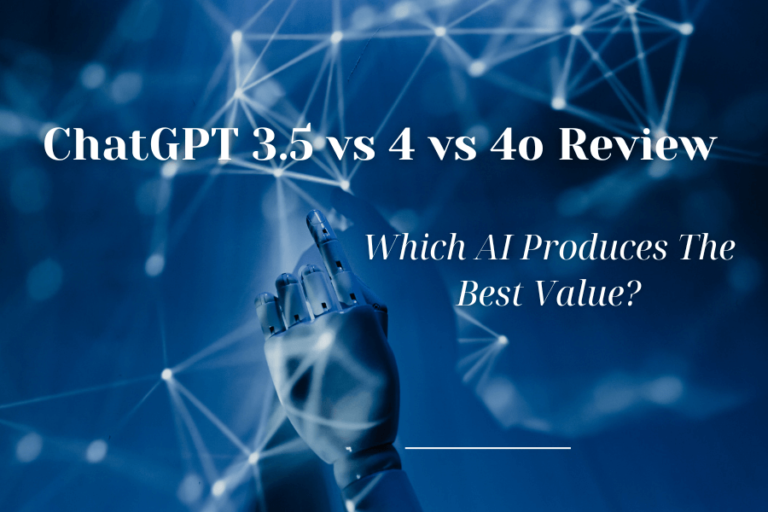What You Need to Know About Securing Your AI Tool Using Best Practices
It’s tough to put an exact number on it, but with varying estimates floating around the safest bet is that at least 75% of businesses have tinkered with or fully embraced AI to a greater or lesser extent over the last couple of years.
This is a positive step in terms of productivity and cost-efficiency, but poses problems from a security perspective.
Rather than leaving yourself at risk to a raft of little understood threats, having best practices in place to ensure AI tools are implemented securely is advised, so here are a few points to keep in mind if this is your organization’s ambition.
Tenant Isolation Frameworks
Tenant isolation is a measure which ensures that data and processes of different users (or tenants) remain separate within shared environments. With the rapid advancement of artificial intelligence technologies, securing tenant data is more crucial than ever, and in order to truly learn what AI security is, you’ll need to have a handle on it.
Why Tenant Isolation Matters
In multi-tenant architectures common in AI deployments:
- Each tenant’s sensitive information must be safeguarded from unauthorized access.
- Misconfigurations or vulnerabilities could expose one tenant’s data to another.
When dealing with AI tools, where vast amounts of sensitive data are processed and analyzed:
- Breaches can lead to significant financial losses.
- Trust between service providers and users hinges on robust isolation mechanisms.
Implementing Effective Isolation Strategies
Since 72% of business decision-makers are concerned about the threat posed by AI from a security perspective, it’s sensible to put plans in place to deal with the likes of tenant isolation snafus. Here’s what this involves:
1. Virtualization Technologies
Virtual machines (VMs) or containers isolate resources effectively.
- VMs offer full system virtualization; each runs its own OS instance.
- Containers provide lightweight isolation at the application level while sharing the host OS kernel.
2. Access Controls
Implement stringent identity and access management policies. There are two main options to weigh up:
- Role-based access control (RBAC): Assign permissions based on user roles.
- Attribute-based access control (ABAC): More dynamic, considers user attributes for policy enforcement.
3. Data Encryption
Ensure encryption both at rest and in transit to prevent unauthorized access even if physical boundaries are breached. Use advanced encryption standards such as AES-256 for unimpeachable protection.
4. Network Segmentation
Separate network segments using firewalls or virtual LANs to limit potential attack vectors within a multi-tenant environment.
5. Regular Audits and Monitoring
Continuously monitor systems for suspicious activities, perform regular security audits, ensure compliance with evolving industry standards like GDPR or CCPA, and keep logs accessible but secure for forensic analysis when needed.
Prompt Handling
Prompt handling is another means of maintaining the integrity and reliability of AI systems. Properly managing how prompts (inputs) are handled ensures that the AI behaves predictably and securely. We’re not talking about low-level ChatGPT tricks that are about creativity, but rather malicious circumventions of prompt protections.
Understanding Prompt Injection Attacks
AI tools can be vulnerable to prompt injection attacks where malicious inputs exploit weaknesses.
- Attackers craft specific prompts designed to manipulate the model’s output.
- This could lead to unauthorized data access or corrupted responses.
So take the example of an AI-driven customer service bot; if attackers inject harmful commands through chat interactions, they could potentially disrupt services or extract confidential information.
We’ve also seen this happen in major cases such as the NYT’s copyright case against OpenAI. It was claimed that the media firm subverted (or hacked) ChatGPT via prompts which are not allowed under the ToS issued by the AI stalwart. So it’s very much a known quantity, even if the potential permutations are little understood.
Best Practices for Secure Prompt Handling
Rather than assuming that your AI tools are immune to prompt handling problems (they’re not), being proactive in preventing such scenarios is sensible, and involves the following steps:
1. Input Validation
Ensure rigorous validation checks on all user inputs.
- Sanitize inputs by removing harmful characters or patterns.
- Implement whitelisting techniques to allow only known safe input formats.
2. Rate Limiting
Prevent abuse by limiting the number of requests a single entity can make over a given period, which mitigates automated attacks that rely on high-frequency submissions, such as brute force attempts to find exploitable prompt structures.
3. Contextual Awareness
Design models with contextual understanding capabilities. They should recognize unusual patterns in user behavior that may indicate an attack attempt, enhancing security by refusing abnormal requests based on learned context from historical data usage trends.
Verify users before allowing them access to sensitive functionalities within the system. Incorporate multi-factor authentication (MFA), and restrict advanced features behind additional verification layers ensuring only legitimate users interact deeply with your AI tools.
5. Logging and Monitoring
Track interactions continuously, and maintain detailed logs for all prompts received. These logs help identify suspicious activities retrospectively, enabling quicker response times when addressing potential breaches.
AI Governance
AI governance refers to the frameworks and practices ensuring that AI systems operate ethically, transparently, and securely. In 2024, this area is undergoing a metamorphosis aimed at addressing complex security challenges.
Strengthening Regulatory Compliance
Regulatory bodies worldwide continue tightening their grip on AI technologies.
- The European Union’s Artificial Intelligence Act (AIA) imposes strict requirements for high-risk AI systems.
- The U.S. is also moving towards comprehensive federal regulations, insisting that sturdy security measures are provided by developers, and building towards an AI Bill of Rights.
To keep pace, organizations must ensure compliance with these evolving laws, integrating best practices into their development cycles, and implementing thorough documentation of all processes to demonstrate accountability.
Emphasizing Explainability and Transparency
Understanding how an AI system makes decisions is crucial. If you cannot explain your model’s behavior clearly, its decisions may become a black box, posing severe risks when things go wrong.
Key strategies include:
1. Explainable AI (XAI) Techniques
Develop models with built-in transparency features.
- Use methods like LIME or SHAP to interpret model predictions clearly.
- Offer user-friendly interfaces showing how inputs are transformed into outputs.
2. Audit Trails
Maintain comprehensive logs documenting every decision made by the system. This not only helps in troubleshooting but also provides necessary evidence during regulatory inspections or internal reviews.
Prioritizing Ethical Considerations
Ethics play a vital role in shaping secure and trustworthy AI deployments. You need to adopt bias mitigation as a means of guaranteeing fair treatment, especially when diverse user groups are being served by your AI tools.
1. Bias Detection Tools
Deploy automated tools capable of identifying potential biases within datasets or model behaviors early in the development phase.
These proactive steps prevent discriminatory outcomes post-deployment while fostering trust among stakeholders who have the right to expect ethical implementations in this context.
2. Diverse Development Teams
Encourage diversity within your teams, as varied perspectives lead to better solutions being developed to address broader concerns. This inclusivity strengthens overall system resilience against niche attack vectors. It is also a way of boosting team performance by up to 39% compared to less diverse team setups.
Final Thoughts
These AI security concerns and the best practices to counteract them are a good framework to build your own strategies around.
Since each AI tool implementation will be unique, and risks we’ve not touched on could be more pressing for your organization, be sure to adapt and alter what we’ve discussed as needed, and get expert support if this is not your area of expertise.








